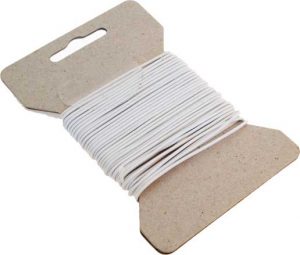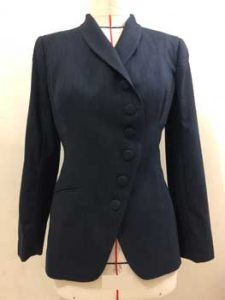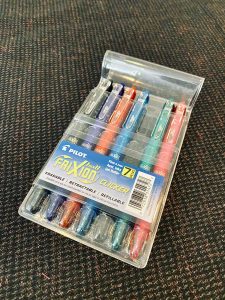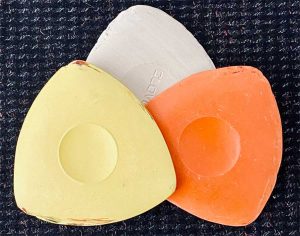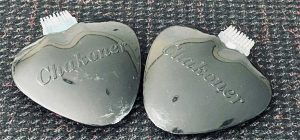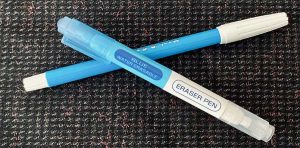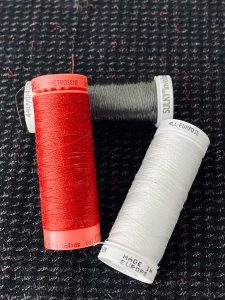 Whether you’re making a flirty tutu, a long flowing wedding veil or decorating for a bridal shower, it’s likely some tulle will be involved in the process.
Whether you’re making a flirty tutu, a long flowing wedding veil or decorating for a bridal shower, it’s likely some tulle will be involved in the process.
Like its netting cousin, tulle is an openwork fabric sporting allover holes for a transparent look. Netting has larger holes than tulle and it’s usually stiffer. Both are usually made from nylon, though some other fibers are often found in specialty stores. Both netting and tulle are available in wide widths—from 54” to 108”, so it’s economical to use both for garments and home décor.
When tulle is used in garments, it’s often used either over another fabric, or it’s used in multiple layers for deeper color and modesty. A single layer of tulle is almost invisible.
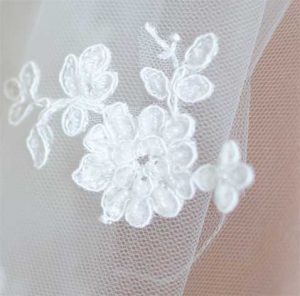 Tulle has no grain so pieces can be cut any direction. It also doesn’t ravel, so edges do not require finishing, unless for decorative purposes. Trims, such as lace, are often applied over the raw edges of tulle for interest and additional weight. When used on veils or as ruffles, tulle often has serged rolled hems and fishing line can be added for undulating edges.
Tulle has no grain so pieces can be cut any direction. It also doesn’t ravel, so edges do not require finishing, unless for decorative purposes. Trims, such as lace, are often applied over the raw edges of tulle for interest and additional weight. When used on veils or as ruffles, tulle often has serged rolled hems and fishing line can be added for undulating edges.
Tulle edges can be scratchy, especially around a multi-layered gathered waistline, and kids are the first to express their discomfort with aplomb. Waistlines of tulle skirts are easily bound with ribbon or fabric to prevent the itchy distress.
Pressing
Because of its fiber content, tulle requires extra care during pressing to remove any bolt wrinkles. It’s a good idea not to press directly on the tulle, but instead use a lightweight pressing cloth and a low-temperature iron. Before committing to a pressing method, test on some scraps.
Cutting
To cut tulle, it’s best to use a rotary cutter, ruler and mat for a perfectly straight and even edge. Cutting with scissors can leave uneven or jagged edges. Hold the fabric in place with weights or a ruler while cutting. If you’re cutting more intricate shapes (other than the most-often used rectangles), pin tissue under the fabric, then cut through both at once to maintain the shape needed.
 Sewing
Sewing
Seaming tulle can be challenging, as the layers may try to shift at your machine. Large, flat-head pins can help, as can spring clips to hold the edges in place. If those don’t work, then add a layer or tissue paper or water-soluble stabilizer under the area to be seamed.
Speaking of seaming, with tulle being translucent, all seams are obvious. It’s best to opt for a narrow seam with exactly matching thread, or even clear thread. However, sewing a narrow seam is not without its challenges either—often best to sew a slightly wider seam, then trim to make it narrower.
Use a small needle for tulle sewing and a longer than normal stitch length. If the toes of the presser foot tend to catch on the fabric’s holes, put transparent tape on the bottom of the presser foot, or switch to a roller foot for unhindered feeding.
Gathering can be done my machine or by hand. If you’re gathering by hand, use a large needle and a heavier thread and make even stitches through the mesh openings. Threads can easily pull out in the gathering process so be sure to knot securely at one end. Or, if your tulle project has a layer of other fabric with it, gather both at the same time for easier handling.
If you’re trying to apply a trim to a cut edge of tulle, prevent slipping by using a fabric glue stick to secure the trim in place before sewing.

Other Tulle Uses
In addition to the usual places you find tulle, it’s also a good base to use for machine embroidered laces and trims. Pair it with a water-soluble stabilizer to hold it in place for stitching, then remove once the design is completed. Look for designs specifically digitized for lace.
Tulle is also ideal for gift wrapping—you can purchase it in spooled strips of varying widths to tie up packages and wrap chairs for festive occasions. Use it as you would ribbons and scrunch and tie as desired. Strips of tulle are also ideal for making small gift bags to hold holiday treats or favors—just seam both sides and tie the top. Tulle strips can also be used to make fluffy pompoms and flowers for party décor.
~Linda Griepentrog
Linda is the owner of G Wiz Creative Services and she does writing, editing and designing for companies in the sewing, crafting and quilting industries. In addition, she escorts fabric shopping tours to Hong Kong. She lives at the Oregon Coast with her husband Keith, and two dogs, Yohnuh and Abby. Contact her at .






